The Lighthouse of Alexandria, also known as the Pharos of Alexandria, was a lighthouse towering over the ancient city of Alexandria. The city is still relevant to this day and the lighthouse was located on the eastern point of the Pharos island.
It’s renowned for its remarkable architecture because the sheer height of the structure was unheard of at the time. In fact, the Lighthouse of Alexandria is classified among the seven architectural wonders of the ancient world, which affirms the excellence of its architecture. What was its function? And why was it so remarkable for its time?
Table of Contents
What is the Lighthouse of Alexandria?

The Lighthouse of Alexandria was a tall structure towering over ancient Alexandria that functioned as a guide for thousands of ships to safely arrive at the great harbor of Alexandria. Its construction process was completed around the second century BC, almost certainly in 240 BC. The tower was quite resilient and remained intact in some form until the year 1480 AD.
The structures reached a height of 300 feet tall, or around 91,5 meters. While today’s largest man-made structures are well over 2500 feet (or 820 meters) tall, the ancient Alexandria lighthouse was the tallest structure for well over a millennium.
Many ancient descriptions show that the tower had a statue at its apex. Many contemporary historians believe it to be a statue of Zeus. A statue of a Greek god on Egyptian land might seem a bit contradictory, but it makes sense. This has everything to do with the ones that ruled the lands on which the Lighthouse of Alexandria was built.
Where Was the Lighthouse of Alexandria Located?
The Lighthouse of Alexandria was located on an island called Pharos, just outside of the city of Alexandria. The city of Alexandria was founded after Alexander the Great (the well-known king of Macedonia) and later the Roman Empire conquered the Egyptian empire. The island where the lighthouse was located sits on the Western edge of the Nile Delta.
While Pharos was first an actual island, it later became connected with the mainland through something called a ‘mole’; a sort of bridge made up of stone blocks.

Who Built the Lighthouse of Alexandria?
Although the city was initiated by Alexander the Great, it was actually Ptolemy who ordered the building of the Lighthouse of Alexandria after he came into power. The tallest building made by human hands was completed during the reign of his son, Ptolemy II. The construction took approximately 33 years.
What Was the Lighthouse of Alexandria Made Of?
The tower itself was fully made of white marble. The lighthouse was a cylindrical tower with eight sides. It consisted of three stages, each stage a bit smaller than the one below, and on the top, there was a fire constantly burning day and night.
Before the mirrors we know today were used, the ancient civilizations actually used bronze as the closest thing to a perfect reflection. Such a mirror was usually placed next to the fire of the lighthouse, which helped with magnifying the actual fire.
The reflection of the fire in the bronze mirror was of great value since it made the tower visible from an odd 70 kilometers away. Sailors could easily move toward the city without getting shipwrecked in the process.
The Decorative Statue on Top
The fire itself wasn’t the highest point of the tower, however. At the very top, a statue of a god was constructed. Based on the work of ancient writers, historians generally agree that it was a statue of the Greek god Zeus.
This statue might have been removed as time passed and the rule over the land where the lighthouse was built changed.
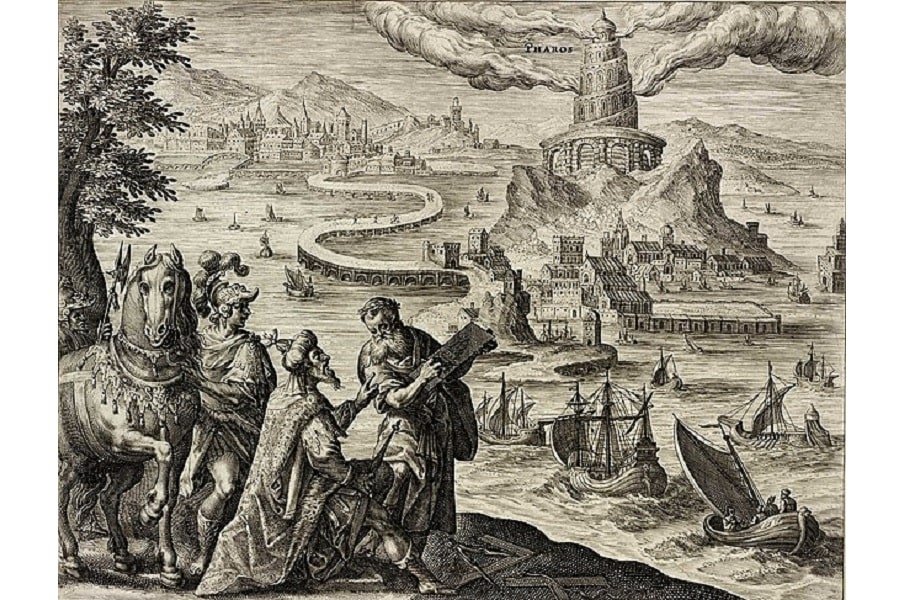
The Importance of the Lighthouse
The importance of the Lighthouse of Alexandria must not be understated. Egypt has been a place with intensive trade, and the positioning of Alexandria made for the perfect port. It welcomed ships from all over the Mediterranean Sea and served as the most important port on the African continent for quite some time.
Because of its important lighthouse and port, the city of Alexandria grew quite a bit over time. In fact, it grew to the point that it was almost the biggest city in the world, only second to Rome.
Why Was the Lighthouse of Alexandria Built?
Unfortunately, the coast of Alexandria was simply a bad spot to have your largest trading center: it lacked natural visual landmarks and was surrounded by a barrier reef hidden under the water. The Lighthouse of Alexandria made sure the correct route can be followed day and night. Also, the lighthouse was used to display the city’s power to newcomers.
So, the lighthouse was built to strengthen the already important position of Alexandria and the Greek-Macedonian Empire. Constructing the now-famous lighthouse allowed for the establishment of an efficient and continuous trade route with any Greek island in the Eastern Mediterranean, or other territories surrounding the Mediterranean Sea.
Without the lighthouse to guide the ships, the city of Alexandria could only be accessed during the day, which was not without risk. The lighthouse allowed the visitors traveling by sea to access the city at any time, during both day and night with a decreased risk of getting shipwrecked.
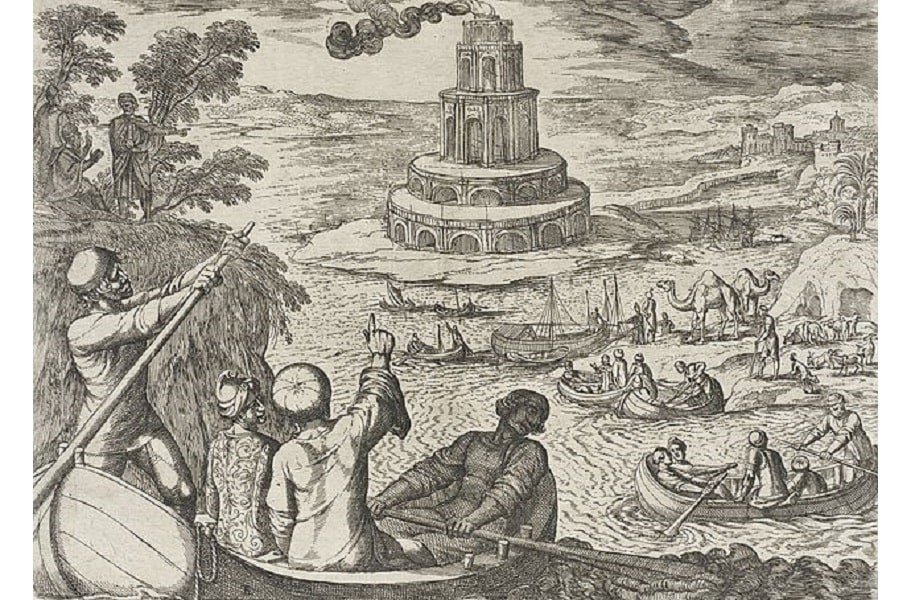
Enemies and Strategy
While the lighthouse allowed for the safe arrival of friendly ships, some legends say that it was also used as a tool to set enemy ships ablaze. However, these are mostly legends and quite possibly untrue.
The reasoning was that the bronze mirror in the light tower was mobile, and could be placed in a way that it concentrated the sun or light of the fire on the approaching enemy ships. If you played with a magnifying glass when you were a kid, you might know that concentrated sunlight can make things hot really quickly. So in that sense, it could have been an effective strategy.
Still, if it was actually possible to damage the ships of enemies from such a large distance remains to be seen. It’s undeniable, however, that Pharos’ lighthouse had two observation platforms, which could be used to identify approaching ships and determine whether they were friends or foes.
What Happened to the Lighthouse of Alexandria?
The Lighthouse of Alexandria was the archetype of contemporary lighthouses but was eventually destroyed due to multiple earthquakes. The last flame was extinguished in 1480 AD when the Sultan of Egypt turned the remaining ruins of the lighthouse into a medieval fort.
The lighthouse saw quite some changes over time. This has mostly to do with the fact that the Arabs ruled the zone where the lighthouse was located for over 800 years.
While from the third century BC the Greeks ruled the territory and from the first century AD the Romans, the lighthouse eventually became an important part of Islamic history in the sixth century AD.
READ MORE: The Complete Roman Empire Timeline: Dates of Battles, Emperors, and Events
There are quite some excerpts from this Islamic period, with many scholars talking about the tower. Many of these texts talk about the tower of what it once was, including the bronze mirror and even the treasures hidden beneath it. However, during the actual reign of the Arabs, the tower was quite possibly renovated and redesigned a couple of times.

Changes During the Times of the Arabs
Many accounts seem to indicate that the Pharos’ lighthouse during the Arabic reign was significantly shorter than its original length. This has to do with the fact that the top part was demolished over time. There are two different explanations for this.
Firstly, it might have to do with the very first restoration of the tower. The reason for restoration could be making it fit the Arabic style of building that was taken over the area.
Since the Muslim rulers of the ancient world were notorious for demolishing the works of empires that came before them, it might well be the case that the Arabs rebuild the whole thing in their own style. It would make sense and allow the approaching ships to see from afar what type of culture they were dealing with.
The second reason has to do with the natural history of the area. That is to say, there were quite some earthquakes during the time that the tower stood strong.
The first official recording of an earthquake damaging the tower was in 796, about 155 years after the Arabs conquered the territory. However, many other earthquakes were also recorded before the one in 796, and it’s hard to believe that none of these damaged the lighthouse.
Renovations That Certainly Happened
Between 796 and 950 AD, the number of earthquakes increased. The Pharos lighthouse was an impressive man-made structure, but even the best buildings of that era couldn’t survive a major earthquake.
The first destructive earthquake, the one in 796, led to the first official renovations of the tower. This renovation mainly focused on the very top part of the tower and potentially led to changing the statue on top.
This was probably just a minor renovation and nothing compared to the renovation that would happen after the most destructive earthquake in 950.
How Was the Lighthouse of Alexandria Destroyed?
After a massive earthquake in 950 that shook up the ancient world of the Arabs, the Lighthouse of Alexandria had to be renovated almost completely. Eventually, more earthquakes and tsunamis in 1303 and 1323 would cause so much damage to the lighthouse that it collapsed in two different segments.
While the lighthouse continued to function until 1480, an Arabic sultan eventually took down the remains and made a fort from the ruins of the lighthouse.
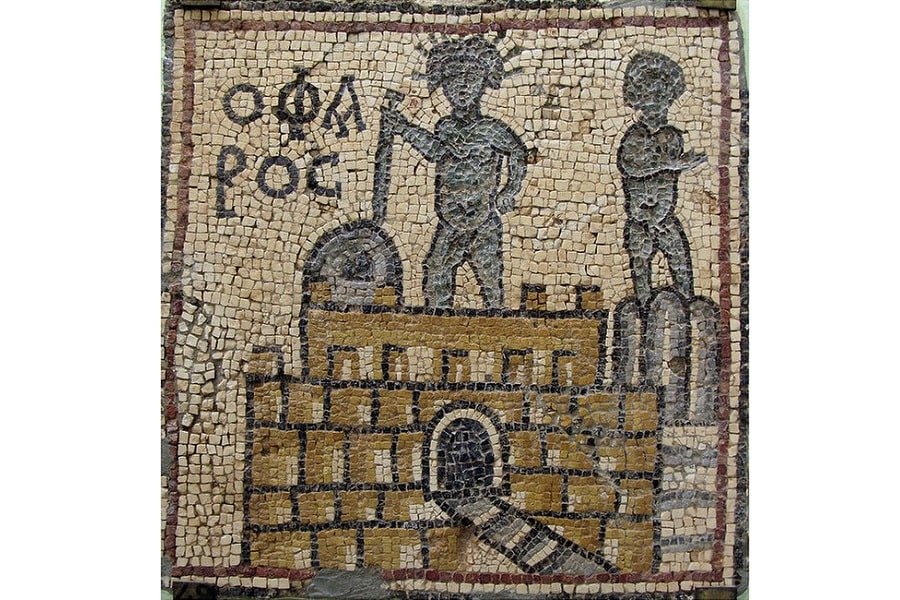
Rediscovery of the Ruins
While the foundation of the lighthouse was transformed into a fort by one of the Arabic sultans, the other remains seemed to be lost forever. That was until French archeologists and divers rediscovered the remains of the Lighthouse of Alexandria at the bottom of the sea just outside of the city.
Amongst others, they found many collapsed columns, statues, and large blocks of granite. The statues included 30 sphinxes, 5 obelisks, and even carvings that date back to the times of Ramses II, who ruled the area all the way back from 1279 to 1213 BC.
So it’s safe to say not all the submerged ruins belonged to the lighthouse. However, some ruins representing the lighthouse were certainly identified.
The Ministry of Antiquities in Egypt made a plan to turn the submerged ruins of Alexandria into an underwater museum. Therefore, it’s possible to see the ruins of the ancient lighthouse today. However, you must be capable of diving to actually see this tourist attraction.
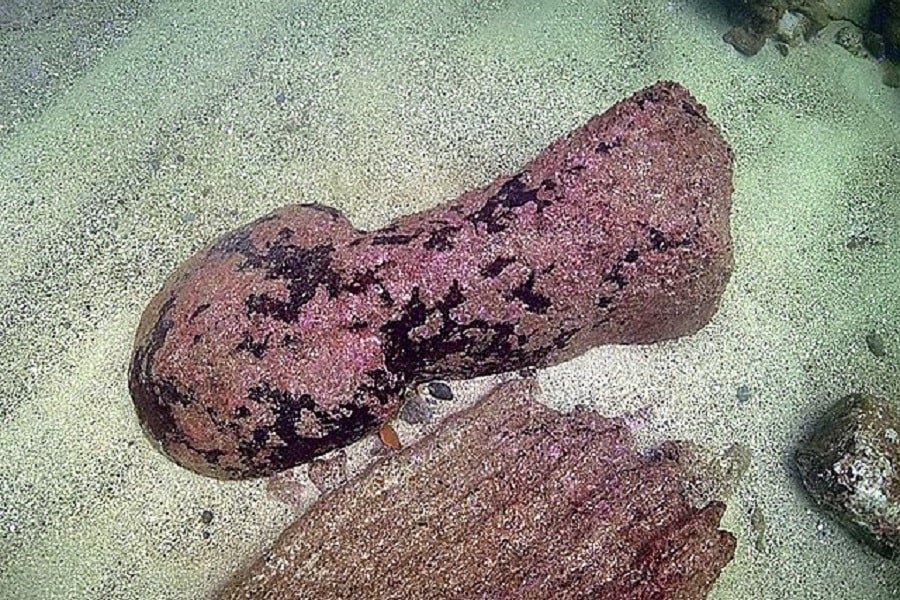
Why is the Lighthouse of Alexandria so Famous?
The first reason why the Lighthouse of Alexandria is so famous has to do with its status: it’s considered to be one of the Seven Wonders of the Ancient World. Although a major earthquake shook the tower to the ground eventually, the lighthouse actually was one of the longest-standing Seven Wonders, only second to the Pyramid of Giza.
For a grand total of 15 centuries, the great lighthouse stood strong. For more than 1000 years it was considered the largest man-made structure on earth. This makes it one of the greatest architectural feats of the ancient world. Also, it was the only one of the Seven Wonders that had a practical function: help seafaring ships to find the harbor safely.
At the time that the Lighthouse of Alexandria was created, there already were some other ancient lighthouses. So it wasn’t the first. Still, the Lighthouse of Alexandria eventually turned into the archetype of all lighthouses in the world. To this very day, almost every lighthouse is constructed with the model of the Lighthouse of Alexandria in mind.
The Memory of the Lighthouse
On the one hand, the Lighthouse of Alexandria is remembered because its ruins were found and can be visited. However, the fact that the remains of the lighthouse became a source of interest, to begin with, has to do with many ancient writers and Arabic literature, which made the lighthouse truly legendary.
In 1510, more than a century and a half after its collapse, the first scriptures on the importance and the legendary status of the tower were written down by Sultan al-Ghawri.
Besides this, the lighthouse played an important part in a poem written in 1707, which touched on the resistance of the Egyptians against the Christians. The Christians lost their land to the Arabs initially, but never really stopped attacking the area after their defeat. They continued to raid and attack the Egyptian coast for two centuries after they were evicted from the land.
The poem became quite popular and turned into a play. Although the original play was performed somewhere in 1707, it continued to be performed all the way into the 19th century. That’s more than a hundred years!
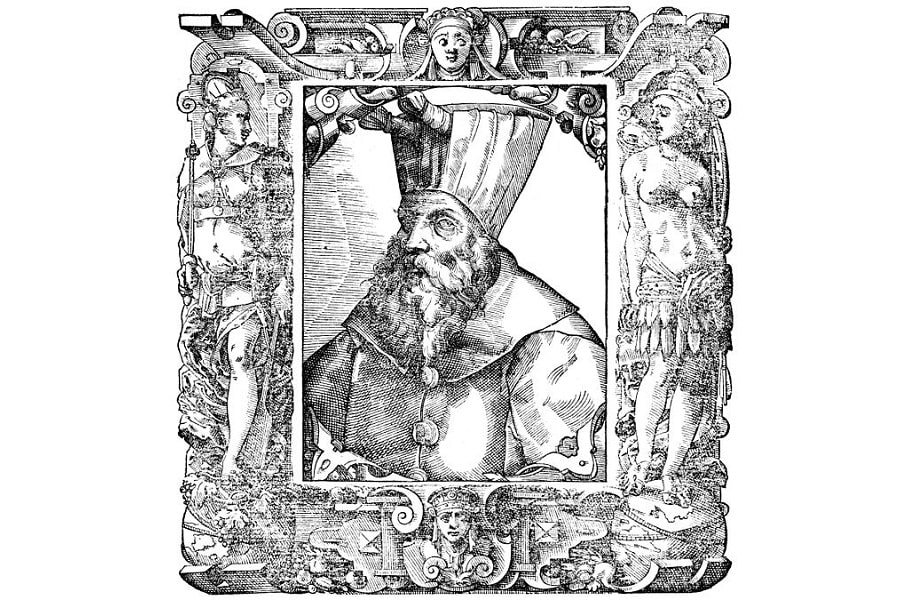
Christian or Islamic Legacy?
Of course, it is true that the city of Alexandria was brought to life by Alexander the Great. Also, it’s certain that the building of Pharos’ lighthouse was concluded under the rule of King Ptolemy II. However, the tower must’ve also had quite a significant status in the Arab world that came to power after the Greeks and Romans.
READ MORE: Ancient Greece Timeline: Pre-Mycenaean to the Roman Conquest
It’s not a coincidence that the lighthouse has continuously been restored by Muslim rulers. Certainly, the strategic advantage of renewing the lighthouse played a big role. However, the tower itself can not have been devoid of religious association, which is confirmed by the ample body of writings on the lighthouse that emerged well after its destruction. In its last years, the tower became a beacon of Islam rather than Christianity.